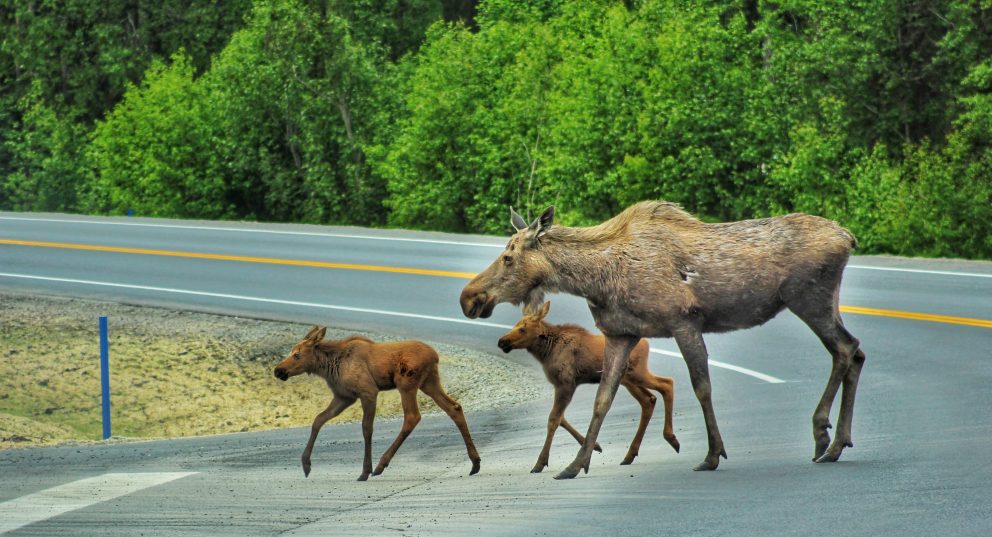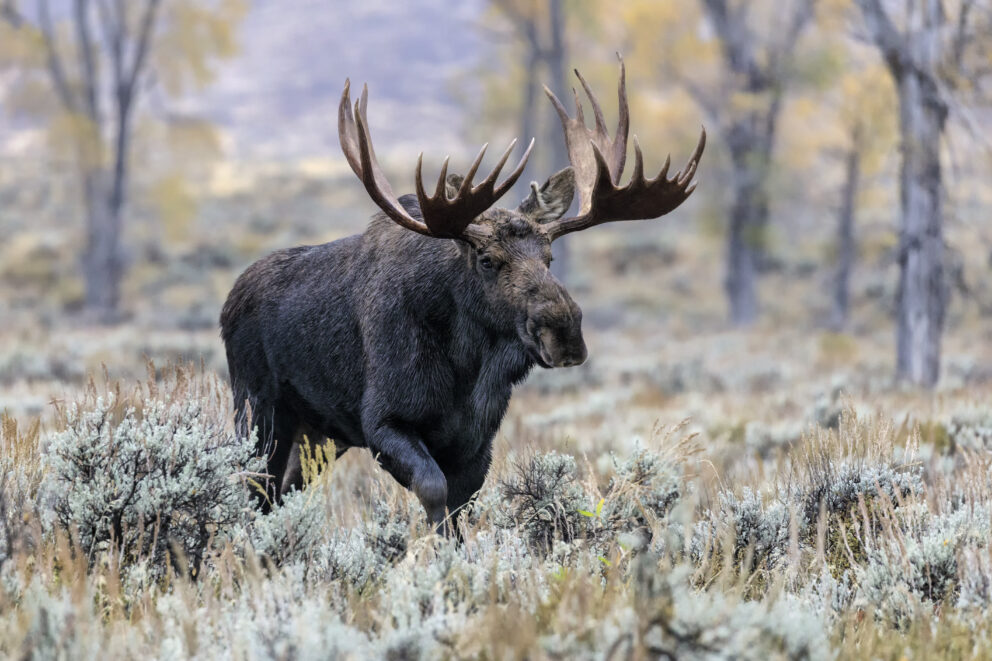- SCIENTIFIC NAME
- Alces alces
- CLASSIFICATION
- Mammal
- LIFE SPAN
- 15-25 Years
- SIZE
- 90-126” | 800-1600lbs
- STATE CONSERVATION STATUS
-
- State Protected
- FEDERAL CONSERVATION STATUS
- Least Concern
- GAME STATUS
- Game
- GAME TYPE
- Illegal to harvest in NV
- Washoe
- Humboldt
- Pershing
- Churchill
- Mineral
- Lyon
- Douglas
- Carson City
- Storey
- Elko
- Lander
- Eureka
- White Pine
- Esmeralda
- Nye
- Lincoln
- Clark
Habitat & Range
Moose prefer areas with streams and lush vegetation. They can sometimes be spotted in northeastern Nevada from Idaho. These areas consist of sagebrush and other shrubs, providing food and shelter in the summer.
- Alpine and Tundra
- Rivers and streams
- Upland Forests
Threats
- Habitat Degradation
Natural History
Moose are herbivores, primarily eating leaves, bark, and twigs from trees and shrubs. Since Moose are so tall, it’s difficult for them to bend down and eat, but occasionally they can be found eating grasses and and aquatic plants. Moose are crepuscular, meaning they are most active at dawn and dusk. The size of a male bull’s antlers distinguish its dominance when competing for a mate. Once the breeding season is over, they will shed their antlers in early winter. They mate during the fall and the female cow will give birth to one baby, called a “calf,” around May. Calves remain with their mother for about a year after birth then are weaned off before the birth of the next calf.
Fun Facts














